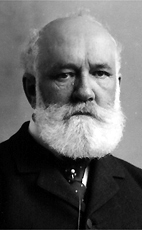The 8th New Brunswick general election was held in October 1892, to elect 41 members to the 28th New Brunswick Legislative Assembly, the governing house of the province of New Brunswick, Canada. The election was held before the adoption of party labels.

The provinces and territories of Canada are sub-national governments within the geographical areas of Canada under the authority of the Canadian Constitution. In the 1867 Canadian Confederation, three provinces of British North America—New Brunswick, Nova Scotia, and the Province of Canada —were united to form a federated colony, becoming a sovereign nation in the next century. Over its history, Canada's international borders have changed several times, and the country has grown from the original four provinces to the current ten provinces and three territories. Together, the provinces and territories make up the world's second-largest country by area.

New Brunswick is one of four Atlantic provinces on the east coast of Canada. According to the Constitution of Canada, New Brunswick is the only bilingual province. About two thirds of the population declare themselves anglophones and a third francophones. One third of the population describes themselves as bilingual. Atypically for Canada, only about half of the population lives in urban areas, mostly in Greater Moncton, Greater Saint John and the capital Fredericton.

Canada is a country in the northern part of North America. Its ten provinces and three territories extend from the Atlantic to the Pacific and northward into the Arctic Ocean, covering 9.98 million square kilometres, making it the world's second-largest country by total area. Canada's southern border with the United States, stretching some 8,891 kilometres (5,525 mi), is the world's longest bi-national land border. Its capital is Ottawa, and its three largest metropolitan areas are Toronto, Montreal, and Vancouver. As a whole, Canada is sparsely populated, the majority of its land area being dominated by forest and tundra. Consequently, its population is highly urbanized, with over 80 percent of its inhabitants concentrated in large and medium-sized cities, with 70% of citizens residing within 100 kilometres (62 mi) of the southern border. Canada's climate varies widely across its vast area, ranging from arctic weather in the north, to hot summers in the southern regions, with four distinct seasons.
There were a number of issues that led to dissatisfaction with the government among certain groups of voters in the province:
- in Bathurst, the Protestant minority felt that they were being overly taxed to support the operation of separate schools
- temperance societies did not support the government because it was opposed to prohibition
- some farmers were dissatisfied with the government's agricultural policy

Bathurst is the county seat for Gloucester County, New Brunswick, and is at the estuary of the Nepisiguit River.
In Canada, a separate school is a type of school that has constitutional status in three provinces and statutory status in three territories. In these Canadian jurisdictions, a separate school is one operated by a civil authority—a separate school board—with a mandate enshrined in the Canadian Constitution or in federal statutes. In these six jurisdictions a civil electorate, composed of the members of the minority faith, elects separate school trustees according to the province's or territory's local authorities election legislation. These trustees are legally accountable to their electorate and to the provincial or territorial government. No church has a constitutional, legal, or proprietary interest in a separate school.

The temperance movement is a social movement against the consumption of alcoholic beverages. Participants in the movement typically criticize alcohol intoxication or promote complete abstinence (teetotalism), with leaders emphasizing alcohol's negative effects on health, personality, and family life. Typically the movement promotes alcohol education as well as demands new laws against the selling of alcohols, or those regulating the availability of alcohol, or those completely prohibiting it. During the 19th and early 20th centuries, the temperance movement became prominent in many countries, particularly English-speaking and Scandinavian ones, and it led to Prohibition in the United States from 1920 to 1933.
However, the opposition was not able to organize an effective campaign to consolidate the support of factions opposed to the government.
The opposition had their best results in York County, where all the government candidates were defeated, and St. John County. A.G. Blair, the government leader, was defeated in York and was forced to run in a by-election held in Queen's.

York County is located in west-central New Brunswick, Canada. The county contains the provincial capital, Fredericton. Outside the city, farming and forestry are two major industries in the county, which is bisected by the Saint John River. The Southwest Miramichi River flows through the northern section of the county.

Saint John County is located in southern New Brunswick, Canada. The city of Saint John dominates the county. Elsewhere in the county, tourism is focused around the Bay of Fundy.

Andrew George Blair was a Canadian politician in New Brunswick, Canada. He served as Premier for 13 years and 136 days, the second-longest tenure in the province's history, behind Richard Hatfield's tenure of 16 years and 310 days.
Of forty-one MLAs, twenty-five supported the government, twelve formed the opposition, and the other four were neutral.
A Member of the Legislative Assembly (MLA), or a Member of the Legislature (ML), is a representative elected by the voters of a constituency to the legislature or legislative assembly of a sub-national jurisdiction.
The province's Legislative Council had been abolished by legislation passed in 1891; that legislation now came into effect.
The Legislative Council of New Brunswick was the upper house of the government of the British colony and later Canadian province of New Brunswick between 1785 and 1891.
| New Brunswick general election, 1892 | ||
|---|---|---|
| Party | Leader | Seats |
| Government (Liberal) | Andrew George Blair | 25 |
| Opposition (Conservative) | Alfred Augustus Stockton | 12 |
| Neutral | 4 | |









